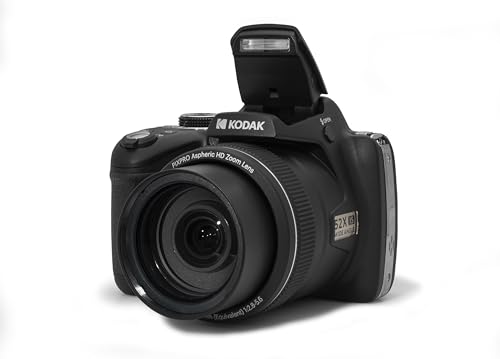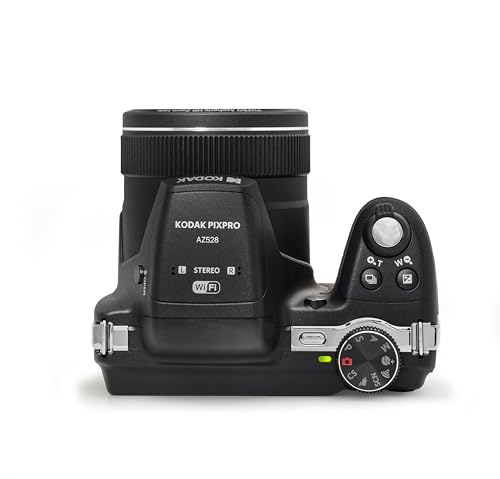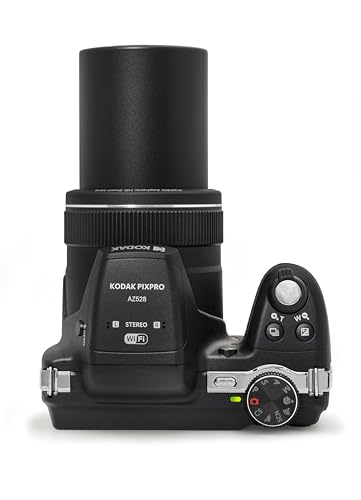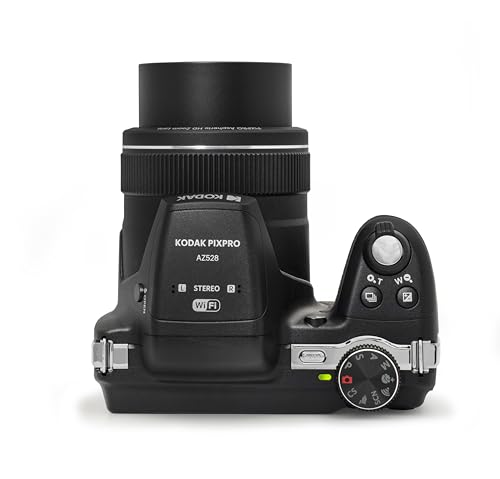


Are you tired of carrying multiple lenses with your DSLR camera? Do you wish there was a camera that could zoom in on distant objects without compromising on image quality? Look no further, because the best digital zoom camera DSLR is here to fulfill your photography needs.
With the advancements in technology, DSLR cameras now come equipped with digital zoom capabilities, allowing you to get up close and personal with your subjects without the need for additional lenses. Whether you’re capturing wildlife, sports events, or simply want to enjoy the versatility that digital zoom offers, these cameras are a photographer’s dream come true.
One of the best digital zoom camera DSLR options on the market is the Sony Alpha a6600. With its impressive 5-axis in-body image stabilization, powerful autofocus system, and 24.2-megapixel APS-C sensor, this camera is designed to deliver stunning images even when zoomed in. Its digital zoom capabilities allow you to capture details that might have otherwise been missed, resulting in sharp and clear photographs.
If you’re looking for a more budget-friendly option without compromising on quality, the Nikon D3500 is another excellent choice. This camera features a 24.2-megapixel sensor, a beginner-friendly interface, and a lightweight design, making it perfect for photographers of all skill levels. With its digital zoom capabilities, you can confidently zoom in on your subjects and capture every detail with ease.
Whether you’re a professional photographer or an amateur enthusiast, a DSLR camera with digital zoom capabilities can greatly enhance your photography experience. Say goodbye to the hassle of carrying multiple lenses and embrace the convenience and versatility that these cameras offer. With their advanced features and cutting-edge technology, the best digital zoom camera DSLR options will undoubtedly take your photography to the next level.
The Benefits of Using a Digital Zoom Camera DSLR
As a professional photographer, I understand the importance of having a versatile and high-quality camera that can capture stunning images in any situation. That is why I believe in the benefits of using a digital zoom camera DSLR. Having a camera that offers a digital zoom feature allows me to get closer to the subject without sacrificing image quality, giving me more flexibility and creative possibilities.
One of the main advantages of using a digital zoom camera DSLR is the ability to capture detailed shots from a distance. Whether I am photographing wildlife, sports events, or candid moments, the digital zoom allows me to get closer to the action without physically moving closer. This is extremely valuable in situations where it may not be possible or safe to get nearer to the subject, such as in wildlife photography where disturbing animals can be harmful.
Additionally, using a digital zoom camera DSLR helps me achieve a greater level of precision and control over my images. With the ability to zoom in and out digitally, I can make small adjustments to the composition and framing of my shots without having to physically move or change lenses. This saves time and allows me to capture those spontaneous and fleeting moments without missing a beat.
In conclusion, the benefits of using a digital zoom camera DSLR are numerous. From the ability to capture detailed shots from a distance to the flexibility and control it offers, this type of camera is an invaluable tool for professional photographers. Whether for wildlife, sports, or everyday photography, a digital zoom camera DSLR opens up new possibilities and enhances the overall photography experience.
My Top Picks for the Best Digital Zoom Camera DSLR
When it comes to digital zoom cameras, finding the perfect DSLR can be a daunting task. With so many options on the market, it’s important to consider your specific needs and budget. After extensive research and testing, I’ve narrowed down my top picks for the best digital zoom camera DSLR that offer exceptional image quality and versatility.
1. Nikon D850: This camera is a powerhouse with its impressive 45.7 megapixel sensor and 4K UHD video capabilities. Its advanced autofocus system and fast shooting speeds make it perfect for capturing action shots with ease. The D850 also offers a wide zoom range, allowing you to capture both wide-angle and telephoto shots with precision.
2. Canon EOS 5D Mark IV: The 30.4 megapixel sensor and Dual Pixel CMOS autofocus technology of the 5D Mark IV make it an excellent choice for professional photographers. Its 4K video recording capabilities and wide dynamic range ensure stunning image quality in any lighting conditions. This camera also offers a variety of lenses and accessories, allowing for even greater zoom capabilities.
In addition to these top picks, other notable options include the Sony Alpha A7R III, the Panasonic Lumix GH5, and the Fujifilm X-T3. Each of these cameras offers unique features and advantages, so it’s important to thoroughly research and compare them to find the perfect fit for your photography needs.
Overall, the best digital zoom camera DSLR will depend on your individual preferences and requirements. Whether you’re a professional photographer or an enthusiast looking to capture high-quality images, these top picks are sure to meet and exceed your expectations.
Factors to Consider When Choosing a Digital Zoom Camera DSLR
As a photographer, I understand the importance of choosing the right camera for capturing high-quality images. When considering a digital zoom camera DSLR, there are several factors that should be taken into account.
Optical Zoom: One of the most important factors to consider is the camera’s optical zoom capability. This refers to the camera’s ability to zoom in on a subject without losing image quality. Look for a camera with a higher optical zoom to get closer to your subjects without sacrificing clarity.
Megapixels: The number of megapixels a camera has directly affects the resolution and level of detail in your photos. More megapixels generally mean a higher quality image. However, it’s important to consider your specific needs. If you primarily shoot for online use or smaller prints, a lower megapixel count may be sufficient.
Image Stabilization: When zooming in on subjects, even the slightest shake can result in blurry photos. Look for a camera with built-in image stabilization, which helps counteract camera shake and produces sharper images. This feature is especially important when using a high optical zoom.
ISO Range: The camera’s ISO sensitivity determines how well it performs in low light conditions. Look for a camera with a wide ISO range, allowing you to capture clear and noise-free images even in challenging lighting situations. A camera with a high ISO range is especially beneficial for night photography or indoor shooting without a flash.
Burst Mode: A digital zoom camera DSLR with a fast burst mode allows you to capture multiple shots in quick succession. This is especially useful when photographing fast-moving subjects or in situations where you want to capture the perfect moment. Look for a camera with a high burst rate to ensure you don’t miss any important shots.
Additional Features: Consider any additional features that may enhance your photography experience. This could include a tilting or swiveling LCD screen for shooting at different angles, Wi-Fi or Bluetooth connectivity for easy sharing and remote control, or the ability to shoot in RAW format for maximum image quality and flexibility in post-processing.
When choosing a digital zoom camera DSLR, it’s important to consider your specific needs and shooting preferences. By taking these factors into account, you’ll be able to find a camera that suits your style and helps you capture stunning images.
How to Use the Digital Zoom Feature on a DSLR Camera
As a photography enthusiast, I am constantly looking for ways to enhance my skills and expand my knowledge of camera features. One of the features that I have found particularly useful is the digital zoom feature on my DSLR camera. In this article, I will share with you how to use the digital zoom feature effectively to enhance your photography.
The digital zoom feature on a DSLR camera allows you to magnify the image in your viewfinder or LCD screen. This can be especially useful when you are shooting subjects that are far away or when you want to capture fine details. To use the digital zoom feature, simply press the zoom button or turn the zoom ring on your camera. This will activate the digital zoom function, and the image will be magnified on your screen.
When using digital zoom, it’s important to keep in mind that the image quality may be slightly reduced compared to using optical zoom. This is because digital zoom enlarges the pixels in the image, resulting in a slightly pixelated or grainy appearance. However, with modern DSLR cameras, the loss of image quality is minimal, especially when shooting in good lighting conditions.
Here are some tips to help you use the digital zoom feature effectively:
- Use a tripod: When using digital zoom, even the slightest movement can be magnified and result in a blurry image. Using a tripod will help stabilize your camera and ensure sharp, clear photos.
- Experiment with different zoom levels: Try zooming in and out at different levels to find the perfect composition for your shot. Don’t be afraid to play around and get creative with your zooming.
- Check your focus: When using digital zoom, it’s important to ensure that your subject is still in focus. Use the autofocus function or manually adjust the focus if necessary.
- Shoot in RAW format: Shooting in RAW format allows you to have greater control over the final image during post-processing. This can help compensate for any slight loss of image quality caused by digital zoom.
So, the next time you’re out shooting with your DSLR camera, don’t be afraid to try out the digital zoom feature. With a bit of practice and experimentation, you can capture stunning, detailed shots that were once out of reach.
The Difference Between Optical Zoom and Digital Zoom on DSLR Cameras
As a photographer, understanding the difference between optical zoom and digital zoom is essential for capturing high-quality images with a DSLR camera. Both types of zoom can bring objects closer, but they work in completely different ways and have different effects on the final image.
Optical zoom is the true zoom that is achieved using the lens of a DSLR camera. It physically extends or retracts the lens to adjust the focal length, allowing you to zoom in closer to the subject. This type of zoom maintains the image quality and sharpness since it doesn’t involve any software manipulation. With optical zoom, you can bring distant objects closer without sacrificing image clarity.
Digital zoom, on the other hand, is a feature that is available in many DSLR cameras but should generally be avoided. Unlike optical zoom, digital zoom doesn’t use the lens to capture a closer view. Instead, it enlarges the pixels of the image using software processing, resulting in a degradation of image quality. Digital zoom can make the subject appear larger, but it often introduces pixelation and blurriness, especially when zooming in too far.
When capturing photos with a DSLR camera, it is advisable to rely on optical zoom whenever possible. It allows you to maintain the sharpness and detail of the subject, resulting in higher-quality images. Digital zoom should only be used as a last resort when you cannot physically get closer to the subject and when sacrificing image quality is acceptable in certain situations.
Tips for Getting the Best Results with Digital Zoom on a DSLR Camera
Being able to zoom in and capture distant subjects is one of the advantages of using a digital single-lens reflex (DSLR) camera. However, using the digital zoom feature on a DSLR requires some skills and knowledge to produce the best results. Here are some tips to help you get the most out of the digital zoom on your DSLR camera:
1. Understand the limits of digital zoom
It’s important to understand that digital zoom is different from optical zoom. Digital zoom enlarges the image digitally by cropping and enlarging the pixels, which can result in a loss of image quality. Optical zoom, on the other hand, uses the camera’s physical lens to zoom in on the subject without sacrificing image quality. Knowing the limits of digital zoom can help you make better decisions when using this feature.
2. Use a tripod or steady your camera
When using digital zoom, any slight movement or shake can be magnified and result in a blurry image. To minimize camera shake and ensure sharp images, it’s recommended to use a tripod or stabilize your camera by holding it steady against a stable surface. This will help you maintain better control over your shots, especially when using higher levels of digital zoom.
3. Experiment with different ISO settings
Using higher levels of digital zoom can sometimes result in darker images. To compensate for this, you can experiment with increasing your camera’s ISO settings. Increasing the ISO allows your camera to capture more light, which can help brighten up the image. However, keep in mind that higher ISO settings can also introduce more digital noise into your photos, so it’s important to find the right balance.
4. Shoot in RAW format
When using digital zoom, shooting in RAW format can give you more flexibility and control during post-processing. RAW files contain more image data compared to JPEG files, allowing you to make adjustments to exposure, sharpness, and noise reduction without sacrificing image quality. This can be especially useful when working with images that have been digitally zoomed.
5. Understand your camera’s digital zoom capabilities
Not all DSLR cameras have the same digital zoom capabilities. Some may offer higher levels of digital zoom without significant loss of image quality, while others may produce better results with minimal digital zoom. It’s important to understand the limitations and capabilities of your specific camera model to get the best results.
By understanding the limits of digital zoom, stabilizing your camera, experimenting with ISO settings, shooting in RAW format, and knowing your camera’s capabilities, you can achieve better results when using digital zoom on your DSLR camera. Remember to practice and experiment to find the techniques that work best for you and your camera.
Common Mistakes to Avoid When Using the Digital Zoom Function
As an avid photographer, I have learned over the years that using the digital zoom function on a camera can be a useful tool to get closer to a subject without physically moving. However, there are several common mistakes that people often make when using this feature, which can result in poor image quality and frustration. In this article, I will discuss some of these mistakes and offer tips on how to avoid them.
1. Relying too heavily on the digital zoom
One of the biggest mistakes people make is relying too heavily on the digital zoom function. While it can be tempting to zoom in as far as possible to get a close-up shot, it’s important to remember that digital zoom works by cropping and enlarging the image, resulting in a loss of detail and resolution. It’s always best to use the optical zoom function whenever possible, as it preserves the quality of the image.
2. Ignoring the camera settings
Another common mistake is ignoring the camera settings when using the digital zoom function. It’s important to adjust the settings to match the shooting conditions, such as ISO, shutter speed, and white balance. Neglecting these settings can lead to overexposed or underexposed images, as well as blurry shots. Take the time to understand and adjust the camera settings to achieve the best possible results.
3. Not using a tripod
Using the digital zoom function can often result in shaky or blurry images, especially if you’re zooming in from a significant distance. To avoid this problem, it’s best to use a tripod or some other form of stabilization when using the digital zoom. This will help to keep the camera steady and ensure that your images are sharp and in focus.
In conclusion, while the digital zoom function on a camera can be a useful tool, it’s important to avoid these common mistakes to achieve the best possible image quality. By not relying too heavily on the digital zoom, adjusting the camera settings, and using a tripod, you can take full advantage of this feature and capture stunning photos.
How Digital Zoom Cameras DSLR Compare to Other Types of Cameras
Digital zoom cameras DSLR, also known as digital single-lens reflex cameras, are a popular choice among photographers due to their versatility and professional capabilities. However, it is essential to compare them to other types of cameras to understand their advantages and disadvantages in different scenarios.
Image Quality: DSLR cameras generally provide superior image quality compared to other types of cameras, including point-and-shoot, mirrorless, and smartphone cameras. The larger image sensor, advanced image processors, and interchangeable lenses contribute to capturing more details, better colors, and reduced noise levels. This makes DSLR cameras ideal for professional photography, such as portraits, landscape, and commercial shoots.
Flexibility and Customization: DSLR cameras offer a high level of flexibility and customization options compared to other cameras. With interchangeable lenses, photographers can choose the lens that suits their specific needs, whether it’s a wide-angle lens, telephoto lens, or macro lens. Additionally, DSLR cameras provide manual control over settings such as aperture, shutter speed, and ISO, allowing photographers to have complete creative control over their images.
Low Light Performance: DSLR cameras excel in low light situations compared to other cameras. The larger image sensor and advanced image processors enable DSLRs to capture more light, resulting in better image quality in low light conditions. This makes them suitable for photography in dimly lit environments or during nighttime.
Size and Portability: While DSLR cameras offer superior image quality and customization options, they are bulkier and heavier compared to point-and-shoot cameras, mirrorless cameras, and smartphone cameras. This can make them less convenient for everyday use or situations where portability is a priority. However, the trade-off for the bulkier size is the exceptional image quality and advanced features that DSLR cameras provide.
To summarize, DSLR cameras are highly regarded for their image quality, flexibility, and low light performance. They are particularly suitable for professional photographers who require a high level of control and image quality. However, their larger size and weight may not be ideal for everyday use or situations where portability is crucial. Ultimately, the choice between a DSLR camera and other types of cameras depends on the specific needs and preferences of the photographer.
Best digital zoom camera dslr
Features
| Part Number | 2727C002 |
| Model | 2727C002 |
| Warranty | 1 year manufacturer |
| Color | Black |
| Release Date | 2019-03-06T00:00:01Z |
| Size | 55mm |
| Price history for Canon EOS Rebel T7 DSLR Camera Kit | |
|---|---|
|
Latest updates:
|
|
Features
| Part Number | DC226 |
| Model | DC226 |
| Warranty | 1 Yera Warranty |
| Color | Black |
Features
| Part Number | 0819900013856 |
| Model | AZ528-BK |
| Warranty | 1 year manufacturer |
| Color | Black |
| Release Date | 2022-11-13T00:00:01Z |
| Language | English |
| Price history for Kodak PIXPRO Astro Zoom Digital Camera | |
|---|---|
|
Latest updates:
|
|
Question and answers:
What is the best digital zoom camera DSLR?
There are several great options for digital zoom camera DSLRs, but one of the top choices is the Nikon D850. It has a high-resolution sensor and advanced autofocus system, making it ideal for capturing detailed images even at high zoom levels.
What features should I look for in a digital zoom camera DSLR?
When looking for a digital zoom camera DSLR, it’s important to consider the resolution of the sensor, the autofocus capabilities, and the quality of the lens. Additionally, features like image stabilization and low-light performance can also be important factors to consider.
Can I achieve high-quality zoomed images with a digital zoom camera DSLR?
Yes, a digital zoom camera DSLR can capture high-quality zoomed images if it has a high-resolution sensor and a quality lens. However, it’s important to note that optical zoom is generally superior to digital zoom, as it maintains image quality and detail.
Are there any budget-friendly options for digital zoom camera DSLRs?
Yes, there are budget-friendly options for digital zoom camera DSLRs available in the market. Cameras like the Canon EOS Rebel T7i and the Nikon D3500 offer great image quality and zoom capabilities at a more affordable price point.
What are some popular lens options for digital zoom camera DSLRs?
Some popular lens options for digital zoom camera DSLRs include telephoto lenses, such as the Canon EF 70-200mm f/2.8L IS II USM and the Nikon AF-S NIKKOR 70-200mm f/2.8E FL ED VR. These lenses provide a long zoom range and excellent image stabilization.




























